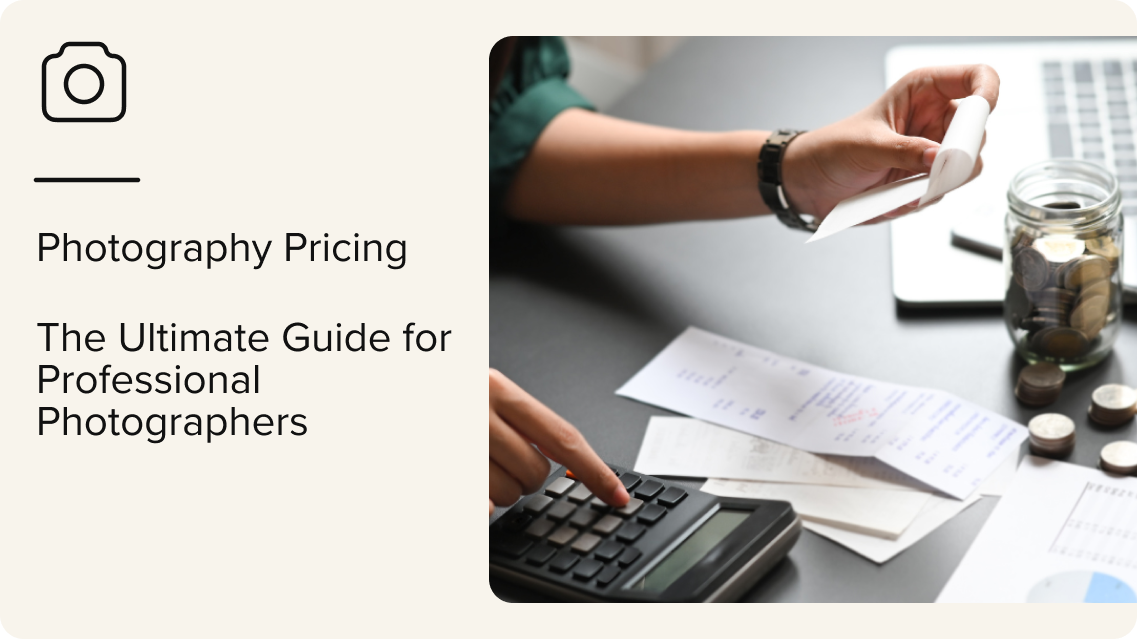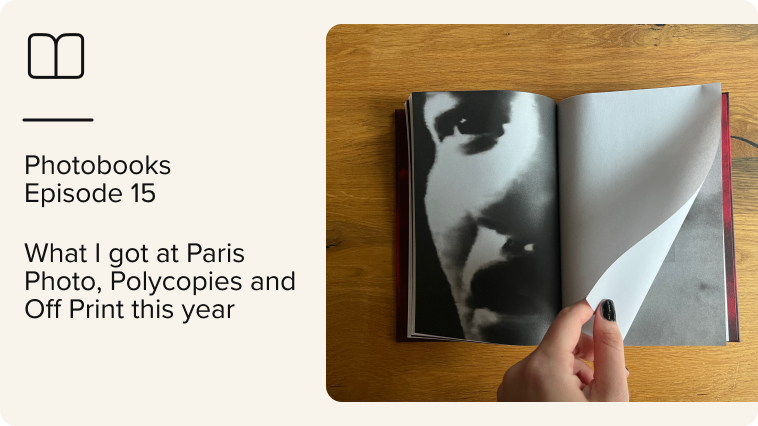
How much should you charge for your professional photography services?
In today’s competitive photography landscape, understanding photography pricing structures and strategies is crucial. Striking the right balance between profitability and client satisfaction can be challenging, and if you’re not careful, you may underprice or overprice your service.
This guide will explore factors to consider when calculating photography rates, compare different photography pricing models, and provide examples of standard photography prices for various photo sessions. We’ll also delve into how leveraging a powerful online photo gallery like picdrop can elevate your service delivery and ultimately lead to more favorable pricing agreements.
Key Takeaways of Photography Pricing Strategies
- Calculate photography pricing effectively: Include all business costs (your CODB), such as equipment, software, studio space, insurance, marketing, and personal living expenses, to ensure your rates are profitable.
- Understand different photography pricing models: Choose from hourly, flat/project-based, package, experience-based, or subscription models that best fit your niche and workflow.
- Know standard photography rates and market differences: Rates vary by niche and each has unique expectations.
- Real estate photography pricing often uses tiered pricing ($150-$1500 per photo shoot), while event photo rates can range from $500-$2500 per shoot.
- Don’t underprice your photography rate: Underpricing can devalue your work, limit growth, cause burnout, and make future rate increases difficult.
- Review and adjust your pricing regularly: Update your rates as your skills, reputation, and market demand evolve to remain competitive and profitable.
What to Consider When Setting Photography Pricing (Calculating Your CODB)
Before calculating your photography prices, it’s crucial to understand all the expenses that contribute to running a successful photography business. Factoring your cost of doing business (CODB) ensures you price your services competitively while maintaining profitability.

Below are some business expenses in running a photography business. Once you know the sum of your annual expenses, divide it by the number of photography jobs you expect to complete in a year. This calculation gives you the minimum amount of money you need to add to each project’s price just to cover your overhead.
1. Photo Equipment Costs
Professional photographers often invest in high-quality cameras, lighting equipment, and accessories to produce top-notch work. Cameras alone can range from hundreds to thousands of dollars, and lighting kits also come at a significant cost.
Additionally, accessories like tripods, lenses, and filters add to the overall expenditure. Regular equipment maintenance is another unavoidable cost essential to ensure the longevity and optimal performance of these expensive tools.
Additionally, accessories like tripods, lenses, and filters add to the overall expenditure. Regular equipment maintenance is another unavoidable cost essential to ensure the longevity and optimal performance of these expensive tools.
2. Operational Expenses
Beyond equipment costs, consider ongoing expenses such as studio rent, utilities, software subscriptions, post-processing time, insurance (equipment and liability), and professional development.
3. Labor Costs
As your photography business grows, consider the potential need for additional personnel. Hiring assistants to manage lighting setups, client communication, or basic editing can streamline workflow but will increase your expenses. Outsourcing photo editing can add per-image or hourly costs. For larger projects, factor in fees for additional photographers to ensure your pricing accurately reflects the full team effort.
4. Photography Marketing and Business Expenses
Building and maintaining a strong online presence is essential. A professional photography website serves as your digital storefront and requires development and maintenance costs. Marketing your services through online ads, social media, or printed materials also involves ongoing investment.
Additionally, don’t overlook the cumulative impact of professional memberships, accounting fees, and even business cards on your overall expenses.
Don’t underestimate the cumulative effect of professional memberships, accounting fees, and even business cards – they all contribute to your overall business expenses.
5. Software Licensing Costs
Licensing fees are a crucial consideration when setting your photography rates. Licensing agreements determine how your images can be used by clients, impacting your pricing structure.
Commercial usage, typically for advertising or marketing, commands higher fees than editorial usage, such as in magazines or newspapers. The duration of the license, whether limited or extended, and its exclusivity also influence pricing. Exclusive licenses, which restrict the client’s rights to share the image, often carry premium photography price tags.
6. Cost of Living
A crucial aspect that many photographers overlook is the cost of living. It’s important to ensure that your rates cover your personal expenses. Failing to account for these expenses can lead to financial instability, even if you have multiple clients. Make sure your pricing strategy allows you to afford a comfortable living while pursuing your photography career.
How Market, Location, and Clients Influence Photography Rates
Knowing your ideal photo clients, pricing potentials, and your competition can help you set the right photography prices.

Photography Pricing Potentials Across Niches
Each photography niche has its own unique set of demands, client expectations, and pricing standards. For example:
- Wedding photography: weddings often provide the opportunity for premium photography pricing, especially for photographers with a strong reputation or unique style.
- Portrait photography: pricing for portraits, ranging from family photos to professional headshots, can vary widely based on factors like client type, session length, and specific requirements.
- Commercial photography: from product photography to corporate events, commercial photography often demands higher photography service prices due to the commercial use of images and the technical skills required.
By understanding these market dynamics, you can tailor your photography pricing structure to align with potential client’s expectations and budgets in each category.
How Location Impacts Photography Pricing
A photographer’s location significantly influences their pricing strategy. Professionals operating in large metropolitan areas often face higher operating costs, including studio rent, transportation, and other business expenses. These increased costs are reflected in their pricing to ensure business sustainability.
In contrast, photographers in smaller towns or rural areas may need to adjust their pricing to align with the local market’s economic conditions.
To set competitive prices, it’s crucial to research local market rates. This can be achieved by speaking with other professionals in your area or consulting industry publications. By understanding the economic climate of your specific geographical market, you can establish pricing that reflects local conditions and ensures your business’s success.
Defining Your Target Audience for Photography Pricing Success
Understanding your ideal photo clients is essential for setting appropriate photography prices. Consider these factors:
- Demographics: age, income level, and social status influence clients’ budgets.
- Expectations: clients with specific needs, such as weddings or corporate headshots, have varying expectations and budgets.
- Psychographics: understanding clients’ values, interests, and lifestyles helps tailor offerings to their needs, justifying your rates.
By combining market research, geographic considerations, and a deep understanding of your ideal clients, you can set realistic and competitive prices that align with client expectations and market demands.
What Are the Common Photography Pricing Models?
Choosing the right pricing model depends on the type of photography you do, your workflow preferences, and your target clients. Here’s a breakdown of the most common models, along with their pros and cons.

1. Hourly Rates
This is a straightforward model in which you charge a set hourly fee for your time. This includes photo shooting, basic editing, and potential client communication. This model is ideal for student or amateur photographers who might work with variable durations or in situations where the project scope is unclear upfront.
Pros:
- Simple to understand and implement
- Offers flexibility for shoots with variable lengths
- Clients might be apprehensive about unforeseen costs if the shoot extends beyond the estimated timeframe
- Better suited for established photographers with a good grasp of their editing time per shoot
2. Flat Rates
Flat rate pricing is a model in which you provide a predetermined set price for a defined scope of work, irrespective of the hours spent. This model is transparent and straightforward and reduces the uncertainty for the client.
It is ideal for routine tasks that you’ve done multiple times and have a clear understanding of the time and resources required.
Pros:
- Clients appreciate the predictability and can budget more accurately
- Encourages efficiency in your work processes
Cons:
- Determining an accurate flat rate can be challenging and might not cover unanticipated work
- If a job takes longer than expected, there’s a risk of not being compensated for the extra time and effort
3. Project-Based Pricing
The project-based pricing model charges clients based on the project scope, regardless of the time spent. This allows for fair compensation for complex shoots requiring more prep work and creativity.
Project-based pricing suits projects with defined scopes and clear deliverables, such as editorial shoots or commercial photography projects.
Pros:
- The ability to price according to the value provided
- Compensation for creativity and prep work, not just time spent
- Risks of underpricing if project complexities are not fully anticipated
- Requires in-depth understanding of project scope and client expectations
4. Package Deals
Package deals bundle several of your services or products into one offer. This model allows photographers to provide added value to clients without significantly increasing workload or costs. However, it’s critical to carefully select what’s included in the package to ensure profitability.
Ideal for recurring clients or larger projects where the client requires multiple services.
Pros:
- Increases perceived value, fostering better client relationships
- Enables more straightforward budgeting with set costs
- Promotes the sale of additional services that may otherwise be overlooked
- Potential for reduced income if the package is not priced correctly
- May lead to underappreciation of individual services included in the package
5. Experience-Based Pricing
Experience-based pricing allows professionals to set prices based on their skills, portfolio, and reputation. This model is a beneficial approach, particularly for seasoned professionals who have honed their craft over time and have built a significant reputation.
Experience-based pricing is best used when your reputation and portfolio show a level of expertise and quality that can command premium photography prices.
Pros:
- Enables compensation for high-quality work and long-term expertise
- Potentially higher prices depending on reputation
- Promotes continuous learning and improvement
Cons:
- May discourage new clients due to perceived higher costs
- Difficult to quantify the years of experience into a price tag
6. Subscription Pricing
Subscription-based pricing is a steady income model in which clients pay a recurring fee, often monthly or annually, for a package of services. It creates predictable revenue and deeper customer engagements for the photographers, but it may require continuous output and valuable content to retain subscribers.
If you can deliver regular content and your market research indicates clients value continuous services over one-time projects, consider this model.
Pros:
- Predictable income
- Deeper customer engagemen
Cons:
- Requires consistent work and high value
- Can be challenging to attract and retain subscribers
How to Calculate Your Photography Rates
Finding a balance between profitability and competitive pricing can be challenging for photographers. Here’s a quick guide to help you set prices that reflect your value and ensure financial stability:

Step 1: Understand Your Photography Costs
Start by cataloging all your operational costs and expenses, including equipment purchases and rentals, travel, studio space, software subscriptions, website maintenance, marketing, insurance, and taxes.
Then, calculate the time you spend on editing, client consultations, and administrative tasks. These are essential to your operations but often overlooked when pricing.
Use this comprehensive cost analysis to establish a baseline daily rate that covers all expenses while ensuring a profit.
Step 2: Conduct Market Research
Conduct thorough research to understand the going rates for photography services within your niche and region. Prices can vary widely depending on the type of photography, the market demand, and the level of expertise. Use this research as a guideline to set your prices, but adjust based on your unique value proposition to the market.
Step 3: Position Yourself in the Market
If your skills, experience, and portfolio are above average, don’t hesitate to position yourself higher in the market. Clients who recognize the value of high-quality photography are willing to pay a premium for a stand-out service.
Highlight your unique selling points – be it your artistic style, technical expertise, or exceptional customer service. These factors justify higher rates and help differentiate you from competitors.
Step 4: Develop Your Negotiation Skills
Negotiation is a crucial skill for any photographer, especially when it comes to securing contracts and setting rates. Here are some key strategies to strengthen your negotiation game:
- Know your bottom line: before entering any negotiation, determine the absolute minimum amount you’re willing to accept. This empowers you to walk away if the client’s offer falls short.
- Research market rates: research the typical rates for similar photography services in your area and niche. This equips you with a benchmark when evaluating client proposals.
- Project scope clarity: clearly define the project scope in writing. This includes the deliverables, timeline, and additional fees (travel, editing, etc.). Having a clear agreement helps avoid misunderstandings and strengthens your negotiating position.
Recognize the value you bring as a photographer. Your skills, experience, and artistic vision deserve fair compensation.
Step 5: Educate Your Clients
Many clients may not understand the intricacies of professional photography, including the time and effort that goes into planning, shooting, editing, and delivering the final product. Take the time to educate your clients about the process, emphasizing the value and benefits of your services. Create detailed proposals that break down the costs and outline what the client is receiving for their investment. Use your portfolio and testimonials to showcase the quality of your work and the satisfaction of past clients.
Step 6: Reflect on Your Photography Skill Values
Your pricing should reflect your respect for your art and the photography industry. It’s not just about covering costs or matching competitors; it’s about charging what your work is genuinely worth. This approach not only ensures financial sustainability but also fosters a sense of pride and respect for your craft.
Step 7: Regularly Review and Adjust
The market landscape can change. Regularly review your pricing to ensure it remains competitive and reflects your evolving experience level.
Use client feedback to indicate your pricing strategy’s effectiveness, and adjust your rates accordingly as your skills and reputation grow. Beginners can also use an online photography pricing calculator.
A photography pricing calculator is a helpful tool for photographers to determine the cost of a photo shoot. It considers factors such as the shoot length, the number of photos taken, and any extra services, such as editing, that might be needed.
Photography Pricing Benchmarks and Ranges per Industry
So, how much should you charge for your photography services?
Let’s explore a sample photography pricing list for various specializations to give you an insight into how this looks in practice. Please note that these are examples, and actual pricing should reflect your market research and operational costs.
Event Photography Pricing
Event photographers, such as corporate event photographers, must account for unique factors such as specialized retouching software, additional lighting gear, multiple cameras, and travel and accommodation expenses. Given these extra costs, a typical price list for event photography might include:
- Basic Package: $500 – Coverage of up to 3 hours, basic editing, digital copies
- Standard Package: $1,200 – Coverage of up to 6 hours, advanced editing, a photo album, digital copies
- Premium Package: $2,500 – Full-day coverage, advanced editing, multiple photographers, a photo album, digital copies, and a custom slideshow
Product Photography Pricing Guide
Commercial and product photographers frequently rank amongst the highest earners in the industry. A typical price list for commercial photography might include:
- Hourly Rate: $250 – $500 – Photography and basic editing, digital delivery
- Half-Day Rate: $1,200 – $2,000 – Up to 4 hours of coverage, advanced editing, digital delivery
- Full-Day Rate: $2,500 – $4,000 – Up to 8 hours of coverage, advanced editing, digital delivery
Real Estate Photography Pricing
Due to realtors’ price-consciousness and focus on cost-cutting, a tiered photography pricing model is the most profitable for real estate photography. A typical price list might include:
- Basic Package: $150 – Photos of up to 10 properties, basic editing, digital delivery
- Standard Package: $300 – Photos of up to 20 properties, advanced editing, digital delivery
- Premium Package: $500 – Photos of up to 30 properties, advanced editing, virtual tours, and digital delivery
News Photography Pricing Example
News photographers generally need less equipment and logistical necessities than event or fashion photographers. As such, their prices tend to be significantly lower.A typical price list for news photography might include:
- Assignment Rate: $200 – Coverage of a single event or news story, basic editing, digital delivery
- Half-Day Rate: $600 – Up to 4 hours of coverage, basic editing, digital delivery
- Full-Day Rate: $1,000 – Up to 8 hours of coverage, basic editing, digital delivery
Wedding photography Pricing
Wedding photography commands higher prices due to its exceptional quality and clients’ unique requests. A typical price list for wedding photography might include:
- Basic Package: $2,000 – 6 hours of coverage, basic editing, and a selection of digital photos
- Standard Package: $3,500 – Full-day coverage, advanced editing, digital photos, and a photo album
- Premium Package: $5,000 – Full-day coverage, two photographers, advanced editing, digital photos, a deluxe photo album, and a custom slideshow
Portrait photography Pricing
Portrait photography sessions are usually smaller in scope, often spanning half an hour to two hours. A typical price list for portrait photography might include:
- Mini Session: $250 – 30-minute session, basic editing, 5 digital photos
- Standard Session: $600 – 1-hour session, advanced editing, 15 digital photos
- Deluxe Session: $1,500 – 2-hour session, advanced editing, 30 digital photos, and a framed print
Freelance photography Pricing
Freelance photographers can choose their own prices, which means that the cost can vary significantly. A typical price list for freelance photography might include:
- Hourly Rate: $50 – $300 – Photography and basic editing, digital delivery
- Half-Day Rate: $400 – $1,200 – Up to 4 hours of coverage, advanced editing, digital delivery
- Full-Day Rate: $800 – $2,500 – Up to 8 hours of coverage, advanced editing, digital delivery
5 Pitfalls of Underpricing as a Professional Photographer
Many new photographers fall into the trap of underpricing their services. While it might seem like an easy way to attract clients initially, underpricing can have significant drawbacks in the long run.
1. Underestimating True Costs
Setting a low daily rate often fails to cover the full costs of running a photography business. This rate may not adequately account for hidden expenses such as post-processing time, equipment maintenance, insurance, marketing, and continuous education, all necessary to stay competitive.
2. Affecting Value Perception
Low pricing can inadvertently shape how clients perceive the value of your work and expertise. A rate that seems too modest may lead clients to question the quality and professionalism of your services, often driving lucrative projects to higher-priced competitors who are perceived as more prestigious.
3. Limiting Growth Potential
A lower rate restricts your ability to reinvest in your business. It can hinder your capacity to purchase better equipment, upgrade software, or engage in further training, all essential for growth and expansion. This limitation can also impact financial stability, reducing the time available for personal projects that might attract higher-paying clients.
4. Overworking and Burnout
To make up for lower earnings, you might find yourself accepting more projects than manageable, which can lead to burnout. This not only affects your health but can also compromise the quality of your work, potentially damaging your reputation and making it difficult to command higher rates in the future.
5. Setting a Difficult Precedent
Once a low rate is established, it can be challenging to raise prices, particularly with existing clients. This situation creates a cycle of undervaluation, making it harder to adjust rates appropriately as your experience and market recognition grow.
Enhance your Photography Business With picdrop
Effective pricing strategies are crucial for the success of any photography business. Complement your pricing strategy with picdrop – the best photo gallery software.
Why picdrop?
- Beautiful and easy image sharing: effortlessly share your photos with clients.
- Professional galleries: showcase your work in stunning online galleries.
- Quick and secure delivery: ensure fast and secure delivery of your images.
- Efficient collaboration tools: streamline communication and feedback with clients.
|
By combining strategic pricing with a powerful tool like picdrop, you can effectively communicate the value of your work and secure better agreements.
Want to elevate your photography business with picdrop? See picdrop in action to learn more about its photo-sharing features. Ready to try it out? Sign up for a free one-month trial!



